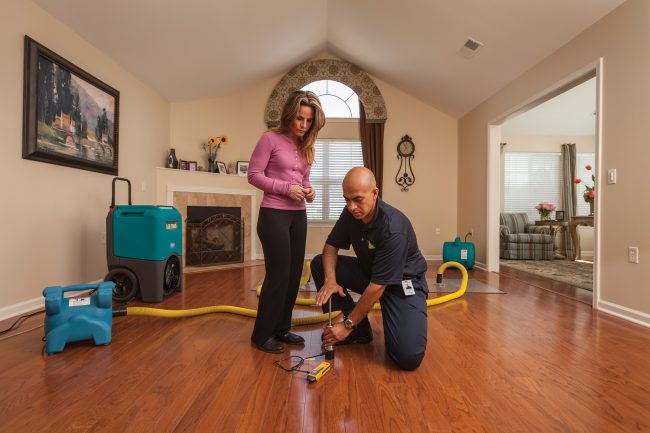Fire and water restoration services deal with restoring a home or business after it has been damaged by fire. Depending on the extent of the damage, restoration may also involve dealing with issues such as water damage from firefighting efforts and smoke and odor.
Restoration experts start by assessing the property to determine the best way to restore it. This involves taking photos, making notes, and recording the damage for insurance claims purposes.
Water Damage
Fire damage often leads to water damage in the form of water used to extinguish flames, or water leaks from damaged pipes and sprinkler systems. Water damage must be addressed by fire and water restoration experts before repairs can begin.
Water can soak into all building materials and contents, ruining equipment and creating a perfect breeding ground for mildew and mold. A professional fire and water restoration team will use specialized equipment and cleaning techniques to extract all the excess moisture.
It’s also important that water be removed quickly so that any structural issues are caught and corrected before they worsen. Drywall may need to be cut out and replaced, carpeting and padding removed, and antimicrobials applied. Boarding and tarping are also necessary to cover any large holes in a structure that could become entry points for pesky rodents and opportunistic thieves.
Smoke Damage
The restoration process includes cleaning, disinfecting, and treating surfaces affected by smoke damage. This includes items made of wood, paper, fabric, plastic, and metal. Porous materials and fabrics need intervention within minutes to save them from permanent damage and odors. Metals are often a target for corrosive chemicals and will discolor from chemical, biological, or physical contamination if not treated quickly.
A thorough survey of the area is important to determine what needs to be cleaned and how far the smoke and contaminants have traveled throughout the property. Protein residue can be hard to see with the naked eye, but it can permanently discolor painted and varnished surfaces. Fuel/oil residue is a common sight in kitchen fires, and requires emergency corrosion mitigation to protect at-risk surfaces. Dry smoke can also enter cracks and pores in surfaces, such as drywall or plywood. It has a fine, powdery texture and may be mistaken for dust, but it can cause electronics to short out, requiring repair or replacement.
Structural Damage
Structural damage can occur as a result of the fire and water restoration process. This can be caused by firefighting efforts that use large amounts of water to douse the flames or from smoke particles that travel far beyond the point of origin.
Water can also damage walls, ceilings, and floors as it seeps through porous materials. This can lead to warping, buckling and other structural issues. Our experts can check for these issues and provide repair services where necessary.
Our experts are familiar with the complexities of dealing with water damage and know how to handle the issue quickly and thoroughly. When water damage is left unresolved it can cause the growth of mildew and mold that poses a health risk to occupants. This can also lead to additional costs, including the cost of new materials and repairs. If the damage is severe, this can also include rebuilding parts of a structure. If your home has been damaged by fire and water, contact us to learn more about our restoration services.
Contents
When the fire has been put out, the contents of the property are inspected. If possible, items are removed to be cleaned. This assessment is aimed at understanding how the fire damaged each item and coming up with a strategy to restore them.
Standing water from the extinguishing process will need to be extracted before the restoration process can begin. Specialized equipment like pumps and vacuums are used to halt further water infiltration into the affected area. Drying and dehumidification then take place. This is done by using industrial-grade air movers and dehumidifiers to ensure the area is ready for cleaning and restoration.
Grainy soot residue, pervasive smoky odors, and charred, stained or melted materials are among the things that need to be removed during this step. This process can take a long time. For this reason, it is best to find another place to stay while the fire and water restoration takes place. This will also make the process easier and faster.


